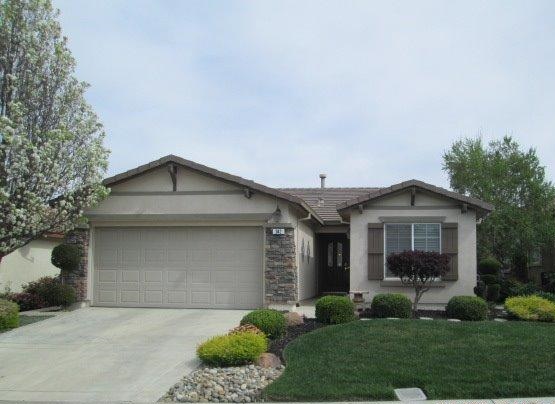From the desk of Ralene Nelson, Trilogy at Rio Vista REALTOR: As a REALTOR selling houses in a retirement community I get asked all kinds of questions – but this question is unique!
Many home purchasers are seniors. Some become homeowners for the first time, but most have been and want to remain homeowners. They just don’t want to remain in their current house. They may want a house that has no stairs, or one that is closer to family or friends or in a warmer climate. In many cases, they want to downsize, both the physical house and the financial burdens that come with it.
Prior to 2008, the senior who wanted to combine house purchase with a reverse mortgage but could not afford to pay all-cash had to use a forward mortgage to finance the purchase, then repay it by drawing on a reverse mortgage. Because the senior had to qualify for the forward mortgage in the same way as any other home purchaser, an inability to document sufficient income or credit could bar the way. Furthermore, the senior who did qualify had to pay settlement costs on both the forward mortgage and the reverse mortgage. 2008, Congress authorized the HECM for Purchase program, under which seniors can buy a house and take out a HECM reverse mortgage at the same time. With this program, the qualification requirements associated with forward mortgages are avoided, and only one set of settlement costs is incurred.
Senior house purchasers now fall into three groups: those who pay all-cash and intend never take a reverse mortgage; those who pay all-cash and plan to take a reverse mortgage later; and those who take a reverse mortgage when they purchase the house.
Avoiding Reverse Mortgages Altogether
Senior home purchasers who are capable of paying all-cash, and who want to leave a debt-free home to their estate, will avoid reverse mortgages. The same is true of seniors with dependent children living with them, who the seniors don’t want to be evicted following their death. In addition, seniors looking to have a new house constructed to their specifications can’t finance construction with a reverse mortgage. The program requires that seniors using a reverse mortgage physically occupy the home as their permanent residence within 60 days of purchase.
These three groups of senior home purchasers who should avoid reverse mortgages comprise only a small part of the total. Most purchasers would do well to at least consider a reverse mortgage.
Deferring the Reverse Mortgage
Seniors in a position to pay all-cash can defer the reverse mortgage decision. If they elect to take one in the future, they will be older and their house will be worth more, both of which increase the amounts they can draw under a reverse mortgage. Working in the opposite direction, however, is a likely rise in interest rates from the unusually low levels that have prevailed in recent years. Higher rates reduce the amounts seniors can draw under a reverse mortgage.
I took a hard look at this issue in an article I wrote last year —“Should I Take Out a Reverse Mortgage Now, or Wait?” I found that if interest rates are stable, the credit line available to a senior of 62 who waits 10 years before taking out the reverse mortgage was only 17 percent higher, whereas a doubling of interest rates during the period would reduce the available line by 69 percent. For seniors looking to strengthen their finances in the future, waiting is a risky strategy.
Purchase With a Reverse Mortgage
Seniors who purchase a house with a reverse mortgage must have the means to pay the difference between the sale price of the property and the maximum amount they can draw on the HECM. As an illustration, a senior aged 62 purchasing a $300,000 house on July 25 could fund about half of it with a reverse mortgage. (Older buyers could finance more). The remaining $150,000 would have to be financed out of the senior’s resources: liquidation of assets or withdrawals from retirement accounts. Gifts from family and friends are also acceptable funding sources, but gifts from the home seller or anyone else involved in the purchase transaction, are not.
Seniors with the capacity to pay all-cash who take out reverse mortgages at time of purchase have a range of options. They can use all the borrowing power of the reverse mortgage ($150,000 in the example above) to minimize their asset liquidation. A large proportion of senior purchasers do this, but in some cases it may be ill-advised because no borrowing power is left for future use.
At the opposite pole, seniors could pay all-cash for the house and retain 100 percent of the borrowing power of the reverse mortgage as a credit line that will grow over time so long as it is not used. At closing or any time thereafter, some or all of the line could be used to draw cash or a monthly payment.
The senior’s choice is not limited to these polar cases. Depending on the individual circumstances, a senior may prefer an in-between case where part of the borrowing power of the reverse mortgage is used to help pay for the house, and the remainder is retained for future use. The challenge is to find the mix that best meets the senior’s needs.
To make a good choice, the senior needs to know what the options are, and what the long-run implications of any set of options are relative to any other set. Because there is no technology available in the marketplace that does this, my colleagues and I decided to build it ourselves. This week we added this feature to the HECM reverse mortgage calculator available on my web site.
Source: huffingtonpost.com ~ By: JACK M. GUTTENTAG

